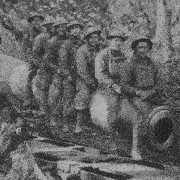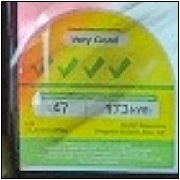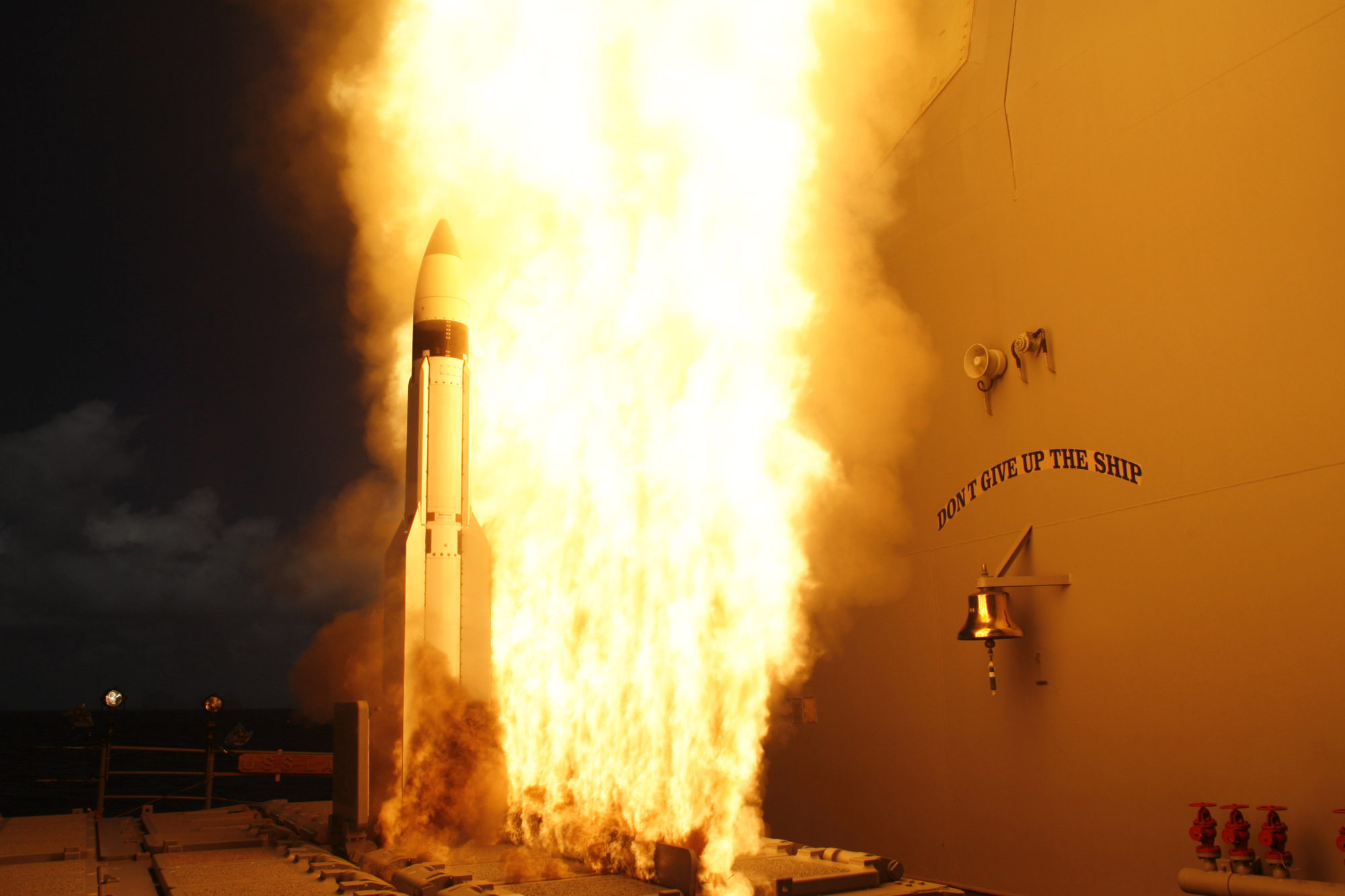|
Cuttlefush posted:the polyphemus? pathetic. try plongeur
|
|
|
|

|
| # ? May 24, 2024 04:25 |
|
Totally normal
|
|
|
|
Turtle Sandbox posted:The rust is visible when most of the rot is not. Normal assed Americans eyes glaze over when you talk about the MIC, but a rusty warship might make them go "that ain't right". everything in america is falling apart and everything new is designed to fall apart more quickly but im sure the us military is the exception because marvel would never lie to me
|
|
|
|
gotta see apartheid death squad guys making the soy face at 21st century combat footbage
|
|
|
|
KomradeX posted:Totally normal is that about the incident in syria?
|
|
|
|
Megamissen posted:is that about the incident in syria? I assume so, didn't watch. But poo poo like this keeps getting suggested for me
|
|
|
|
yeah the veterans react genre has been around for a while and there are a bunch of those channels. it's annoying as gently caress. pretty sure you can use ublock filters to kill some of them
|
|
|
Cuttlefush posted:not really. bulbous bows are actually pretty neat. also some of the nimitz class carriers don't have bulbous bows. im not really sure why they added them because I would think fuel efficiency (which bulbous bows improve, mainly) isn't a huge concern for a nuclear powered ship? I guess refueling the reactors a few years earlier is a huge pain in the rear end taht adds up and there probably aren't major drawbacks. You can use less fuel/power to go a given speed or you can use the same amount of fuel/power to go faster
|
|
|
|
|
I’ve seen several different videos about the Syria thing in the past week so I assumed it was the new NAFO narrative of the week.
|
|
|
|
Slavvy posted:You can use less fuel/power to go a given speed or you can use the same amount of fuel/power to go faster carriers are going to be at / near the theoretical maximum speed for a displacement hull. that’s basically just a direct function of lwl, length at waterline.
|
|
|
|
Cuttlefush posted:yeah the veterans react genre has been around for a while and there are a bunch of those channels. it's annoying as gently caress. best "veterans react" thing was a post on the SA forums about a war on terror vet breaking down in tears while looking at the different toothpaste choices available at a grocery store once they came back home
|
|
|
|
bedpan posted:best "veterans react" thing was a post on the SA forums about a war on terror vet breaking down in tears while looking at the different toothpaste choices available at a grocery store once they came back home it’s legitimately a weird experience to go into a grocery store after a deployment or stint at sea. it all changes in a disconnected way. for me the longest I was out was about nine months. it’s everything your personal relationships, the culture, the music on the radio, but grocery stores are weird. they introduced those mini coke cans in a widespread way when I was out. “what the gently caress is this “ it almost felt like an affront. I mean all the other things are worse especially what it does to relationships. But grocery stock is physical so it makes it more tangible. it’s alienation and the commodity fetishism in grocery stores makes you really feel it. lasts for a week or two.
|
|
|
|
Cuttlefush posted:yeah the veterans react genre has been around for a while and there are a bunch of those channels. it's annoying as gently caress. Youtube would be 90% smaller and 900% better if they got rid of all the soyface
|
|
|
|
We cannot allow for a SCMP: Chinese scientists war-game hypersonic strike on US carrier group in South China Sea, Stephen Chen posted:
Hubbert has issued a correction as of 03:02 on May 25, 2023 |
|
|
|
Hubbert posted:We cannot allow for a
|
|
|
|
cat botherer posted:Wow, too bad we allowed Russia and China a decade lead on hypersonics because MIC grift was more important! I would expect the next round of our wargames to be rigged since Ukraine claimed to shoot down a hypersonic missile too.
|
|
|
quote:The underlying principle of the war game was to be “lenient with the enemy and strict with oneself”, Cao said.
|
|
|
|
|
Frosted Flake posted:I would expect the next round of our wargames to be rigged since Ukraine claimed to shoot down a hypersonic missile too. Good news, the Chinese also rigged the game that way too! quote:The strike group’s cruisers and destroyers were also equipped with advanced weapons and defensive measures, including radar systems that could detect incoming threats while simultaneously tracking multiple targets, the researchers said.
|
|
|
|
Follow up of a prev post that said US closed too many ship yards. https://twitter.com/sharp_writing/status/1661297184967634944?t=tzk8wIHocvuHtTgTy7CCpQ&s=19
|
|
|
|
It’s funny that the entirety of interstate competition from the 1400s is increasingly large, increasingly centralized, states directing the productive forces within their borders and then people got cocky and think they can go to war with the country that makes almost literally every good in their society, because the profits are deposited to banks on home soil.
|
|
|
|
stephenthinkpad posted:Follow up of a prev post that said US closed too many ship yards. Sounds like a terrible idea but also the only answer under capitalism
|
|
|
|
no, more privatization!
|
|
|
|
Sure in retrospect the Navy could have used those ship yards. But have you considered that firing them into condos and retail space made landlords a lot of money. So worth it in the long run
|
|
|
|
KomradeX posted:Sure in retrospect the Navy could have used those ship yards. But have you considered that firing them into condos and retail space made landlords a lot of money. So worth it in the long run You can't let yourself get distracted by silly things like the PLA navy and global hegemony from the fight against the real enemy: Unions
|
|
|
|
Do these closed ship yards include Brooklyn Navy yard? Its got a pretty cool micro brew and a hip bagel shop. Worth it IMO.
|
|
|
|
stephenthinkpad posted:Do these closed ship yards include Brooklyn Navy yard? Its got a pretty cool micro brew and a hip bagel shop. Worth it IMO. Yeah, although it was an earlier one and the Navy fully moved out in 1993 but it had been winding down for a while. It is a good question about how much excess capacity that the US is going to find at overseas yards and the complications that are going to come from them.
|
|
|
|
quote:On March 29, 1954, Admiral Arthur W. Radford, then chairman of the U.S. Joint Chiefs of Staff, prepared a memorandum for the President’s Special Committee on Indochina recapitulating his discussions with his French counterpart, General Paul Ely, regarding the situation in Indochina.115 The exchanges between Admiral Radford and General Ely were quite frank. Admiral Radford reported that he “presented to General Ely our views in regard to expanding the MAAG to assist the French in training the Vietnamese, indicating to him the importance which we attach to this action, first, to obtain better results, secondly to release French officers for combat service,” but that “General Ely was most unsympathetic to any encroachment on French responsibilities or significant expansion of the MAAG. The reasons given related to French ‘prestige,’ possible lack of confidence in French leadership by the Vietnamese, ‘the political situation in France,’ etc.”116 ... quote:American analysts at the time and later have also noted defects in the way U.S. aid to the French in Indochina was handled. For example, the editors of The Pentagon Papers in 1971 highlighted six points of criticism of the U.S. policy toward Indochina. They were: ... quote:While by 1954 U.S. military aid constituted the major portion of all the resources applied by the French in Indochina and had surely delayed a Viet Minh victory, the overall conclusion reached by the editors of The Pentagon Papers was that “the effectiveness of the United States assistance program as an instrument of United States policy—quite aside from the outcome of the war—was thus quite low.”126 In fact, the United States, desperate to hold the line against the spread of Communism in Asia following the defeat of the Nationalist Chinese by Mao’s Red Army, allowed itself to be manipulated by the French, who received a cornucopia of military equipment with which to pursue their efforts to maintain political, economic, and military control over their Indochinese colonies while constantly assuring the U.S. government of their intentions to grant them full independence at the earliest possible time. The failure of the U.S. government to correct these defects in policy formulation and execution helped to seal the fate of the French in Indochina and led the United States into a conflict that would last for the following quarter century.
|
|
|
|
quote:f. U.S. administrative procedures are enormously wasteful, irritating and paper heavy. I don't know what to say when even  complain about excessive bureaucracy. complain about excessive bureaucracy.
|
|
|
|
gradenko_2000 posted:... Ah, shifting blame, the most ancient and honorable martial art.
|
|
|
|
gradenko_2000 posted:no, more privatization! gently caress it, I'm posting it Weapon of Choice: Small Arms and the Culture of Military Innovation posted:The changing soldier-engineer relationship and the privatization of Royal Ordnance tl;dr As you can see, the program, and the rifle itself, were plagued by problems. I would suggest that they are the direct consequence of neoliberal policies. Substandard Quality: The SA80 was touted to be a leap forward in small arms technology for the British forces, but it fell short of its promise due to numerous issues related to design and functionality. One notable example was the issue of sand ingress, which significantly affected the reliability of the SA80, especially - and obviously - during the Gulf War operations in Kuwait. Lower Volumes: According to the excerpt, problems with the SA80 necessitated over 22 Modification Instructions, slowing the production process and leading to limited availability during key periods, such as the Gulf War. Increased Cost: Despite privatization's promises of cost-effectiveness, the SA80 ended up costing more than its predecessors, both in terms of its initial price and the subsequent costs incurred due to necessary modifications. An example of this is the decision by the Ministry of Defence (MOD) to pay a premium demanded by ROF Radway Green for the continued supply of tubular cut ammunition, which contributed to the financial burden of maintaining the SA80 and necessitated Britain use an entirely separate supply chain for ammunition than the rest of NATO, from initial production down to battlefield logistics. Reliability Issues: There were serious reliability issues with the SA80, especially in environments outside of Europe, which led to soldiers losing faith in the weapon. A telling instance is when troops rarely used the SA80 in anger during the Gulf War due to its problems. It goes almost without saying that infantry grunts not firing their rifle at the first opportunity indicates a severe lack of trust in the weapon's reliability. My takeaway is that implementation of neoliberal policies, such as the privatisation of the RSAF, significantly hosed up the acquisition process of the SA80 system. The legal tussle between the government and BAE Systems over the responsibility of design flaws in the SA80 resulted in an extended period of inefficient resolution - with troops issued weapons known to be defective all the while. Confidence suffered accordingly, with British infantry reporting extremely low small arms ammunition expenditure during the Gulf War. That is to say, infantry grunts, given the opportunity, chose not to fire their rifles. It was only after a 'Mid-Life Upgrade', costing an additional £95 million, that the SA80 reached a satisfactory standard - almost three decades after the initial design specifications were approved. Moreover, the necessary modifications were designed, and the rifles refurbished, by German defense contractor HK. Imagine any period of time previously where Britain would have to rely on Germany to have working rifles. Frosted Flake has issued a correction as of 16:09 on May 25, 2023 |
|
|
cat botherer posted:Wow, too bad we allowed Russia and China a decade lead on hypersonics because MIC grift was more important! And a missile gap (lol) on SAM snd SHORAD systems.
|
|
|
|
|
Centrist Committee posted:everything in america is falling apart and everything new is designed to fall apart more quickly but im sure the us military is the exception because marvel would never lie to me I once assumed the ruling class was smart enough to leave the military alone. Turns out the communist were right.
|
|
|
|
stephenthinkpad posted:Follow up of a prev post that said US closed too many ship yards. congrats to japan for becoming even more of an imperial outpost, enjoy the jet fuel water!
|
|
|
|
https://twitter.com/zhao_dashuai/status/1661739364668551172 The new China tanks look cool ngl. VN20 is unusually chunky at 50 tons though ngl.
|
|
|
|
Danann posted:https://twitter.com/zhao_dashuai/status/1661739364668551172 VN20 is a tank chassis modified to fit troops, Israel and Russia have similar vehicles just as chunky.
|
|
|
|
still p chonky though. but i guess they're not going to be driving those around the rainforest or anything so it could still work fine
|
|
|
|
Some choice words from a MIC preparedness talk (the rest of the talk is not as interesting TBH with you) https://www.youtube.com/watch?v=XMctZ6EcWQw&t=288s "This is not an accident....we planned it, this is deliberately done by the government. We decided we were not going to need the industrial base....ship yard, arsonal....You [MIC] guys figure it out (how to deindustrialize)" He also reference a nyt article. https://www.nytimes.com/2023/03/24/us/politics/military-weapons-ukraine-war.html nyt posted:
stephenthinkpad has issued a correction as of 12:50 on May 26, 2023 |
|
|
|
Cuttlefush posted:yeah the veterans react genre has been around for a while and there are a bunch of those channels. it's annoying as gently caress. I purged all that veteran talk by obsessively watching korean subtitled simpsons clips for a week. It really elevates the experience.
|
|
|
|
stephenthinkpad posted:Some choice words from a MIC preparedness talk (the rest of the talk is not as interesting TBH with you) everything about this is really funny quote:“Look at me. I am not forgiving the fact you’re not delivering the ordnance we need. OK?” Adm. Daryl Caudle, who is in charge of delivering weapons to most of the Navy’s East Coast-based fleet, warned contractors during an industry gathering in January. “We’re talking about war-fighting, national security, and going against a competitor here and a potential adversary that is like nothing we’ve ever seen. And we can’t dillydally around with these deliveries.” like, what the gently caress is this guy gonna do about it lmao, he's talking to the guys who own his boss
|
|
|
|

|
| # ? May 24, 2024 04:25 |
|
Cerebral Bore posted:everything about this is really funny That guy spent his life upholidng the sysytem that in the end is undermining the ability of the people who protect that sysytem. All of that is completely lost on him
|
|
|







































